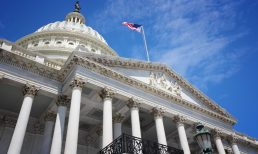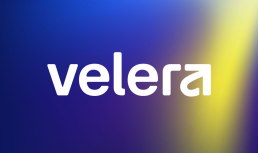Snap Shares Soar As App Redesign Bears Fruit

And in a Snap, the Snap shares soared, snapping a losing streak that had brought forth the dreaded “busted IPO” sobriquet.
Investors bid up the shares of Snap by as much as 28 percent after hours Tuesday (Feb. 6th) after the company reported fourth quarter results that topped expectations, boosted by subscriber growth and increased retention.
In after hours trading shares bounced up to above $17, where the initial public offering price had been 11 months ago in March of 2017.
The headline numbers showed that the company’s top line came in at $285.7 million, well above the $252.9 million that had been estimated and up 72 percent year on year. No profits, of course, and none had been expected, but the loss was also better than projections. The reported loss per share was 16 cents a share, three pennies better than the Street.
The global active daily users came in at 187 million, higher than the 184 million that CNBC.com said had been estimated. And the latest tally was up 18 percent year over year, and up nearly nine million users from the previous quarter.
Average revenue per user came in at $1.53, higher than the $1.36 estimated, as polled by FactSet — and well above the $1.05 seen in the fourth quarter of last year.
The fastest growing product in the company’s pantheon was Snap Ads, management said on the conference call with analysts — especially those sold through auction.
The bulk of total revenues — for this self-described camera company that has also built a user base, as profiled in this space not all that long ago — came from North America, with $219 million coming from that region, or 76 percent, up 72 percent from last year. Europe was $40 million of the top line, which represented 167 percent growth over the timeframe. The rest of the world, in the latest quarter, was $26 million, up from $6 million last year — more than 330 percent. Snap ad impressions were up 90 percent sequentially, and up more than 575 percent year over year (excluding promoted stories).
As for mobile, the CEO said on the earnings call that investments in Android were paying off, with retention of new Android users up 20 percent when compared to last year. Growth on iOS continues too, he told analysts, as bitmoji and Snapchat ended the quarter as the most popular apps for the year via Apple’s app store.
Those numbers seemingly gave some proof positive that the redesign of its signature app has been successful, with a few more recent pushes tied to letting users bring their Snap content to Facebook, for example, and shedding some of the initial focus on disappearing messages.
Investors might have been cheered by the hosting cost per user, which came down slightly from 72 cents last year to 70 cents in the most recent period. And though there’s a long way to go before the red ink turns to black, the gross margin did indeed accelerate markedly, to 36 percent from eight percent.
Narrowing the age gap? Efforts here seem to have had an impact. Thus the communications from CEO Evan Spiegel, who said during earnings report that “the redesign has also made our application simpler and easier to use, especially for older users. Compared to the old design, core metrics around content consumption and time spent in the redesigned application are disproportionately higher for users over the age of 35, which bodes well for increasing engagement among older users as we continue to grow our business.”
Also, said the CEO, corporate strategy is moving beyond mobile. “We feel strongly that Snapchat should not be confined to our mobile application — the amazing Snaps created by our community deserve wider distribution so they can be enjoyed by everyone,” said Spiegel.
These efforts, he said on the earnings call, removed friction from the company’s advertising business, and the latest quarter showed the highest number of quarterly net added subscribers since the third quarter of 2016. 90 percent of Snap ads were bought programmatically during the last quarter of the year (where that tally had been less than 10 percent a year ago), he said, and “the transition to Snap ads is largely behind us.” Price per impression was down 25 percent while ad revenue was up 38 percent sequentially.
Chief Strategy Officer Imran Khan said that the company has seen growth in its direct response business. Investment in machine learning to boost efficiency for advertisers is paying off, with 15 times more app installs in December as compared to April.
Spiegel said on the call that “we decoupled the redesign from a lot of the feature development that we have been working on, so that’s continued and I am very excited about the product pipeline for this year.
“The redesign is really focused on three things. We want to make the app easier to use. We want to bring your friends together and we want to elevate a lot of the great content that we have and discover. And so far, I think we have accomplished all three — and we have tried to be very deliberate. In the rollout, we have learned a lot as we have rolled it out. It’s out now to about 40 million folks, and we’re excited on the progress there.”



